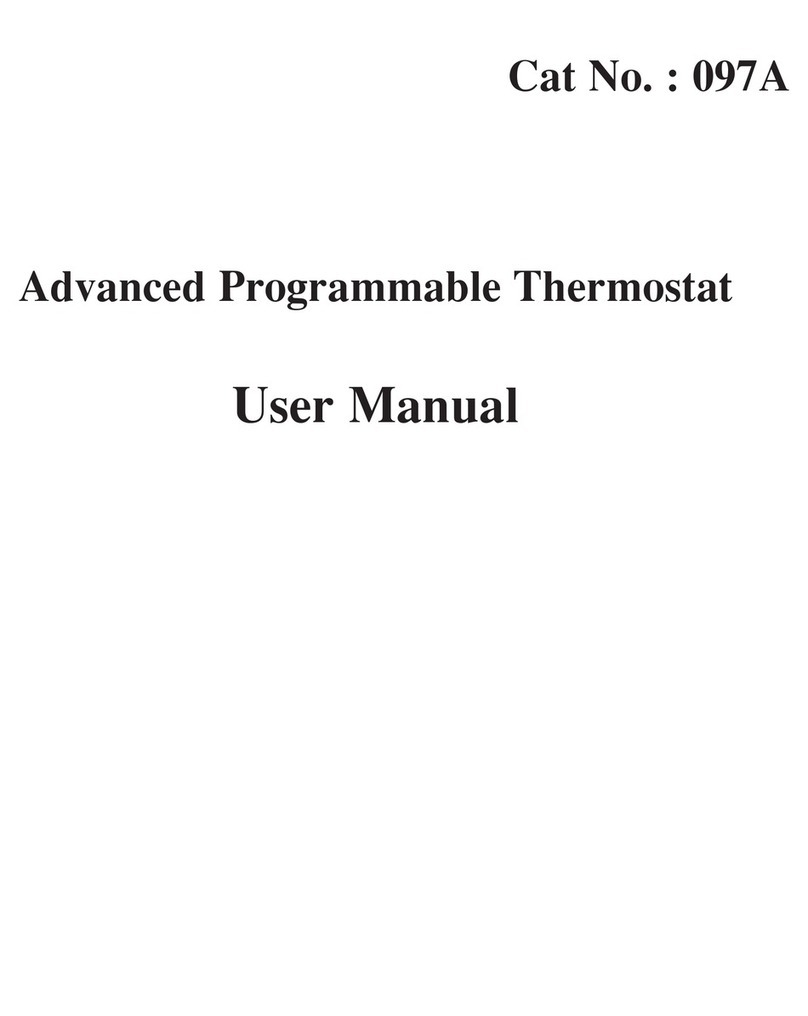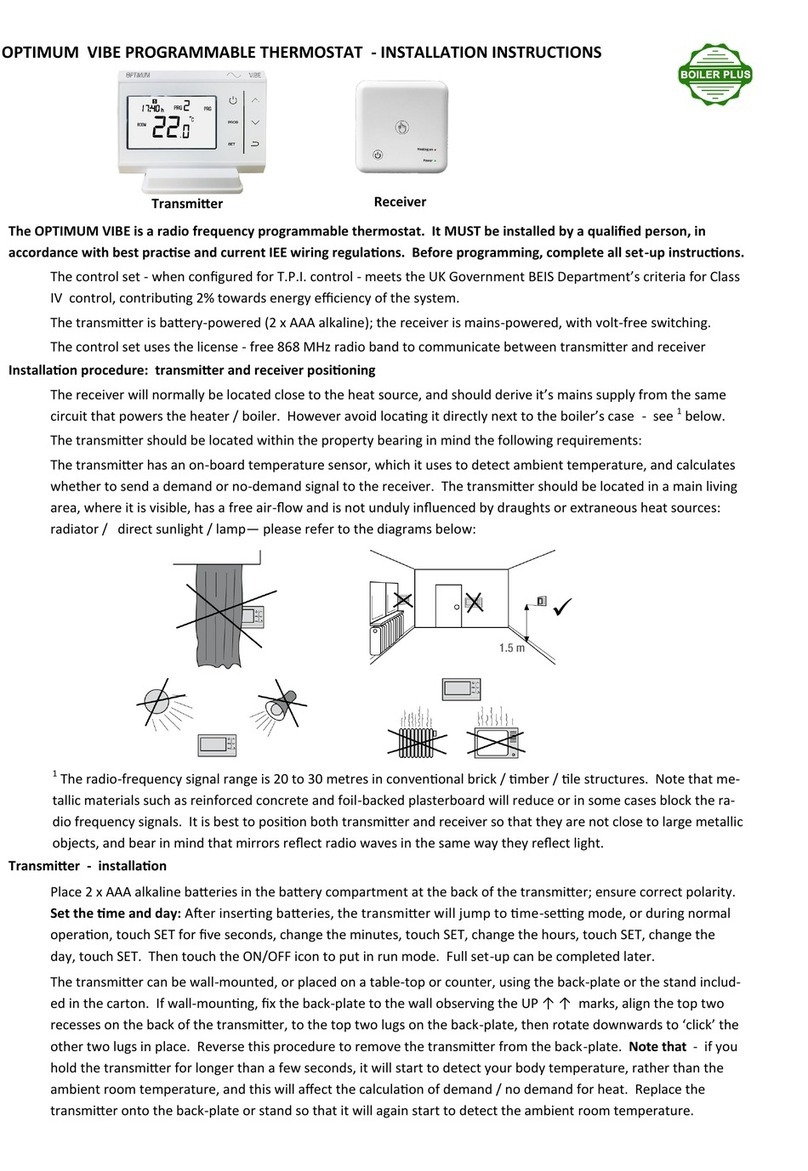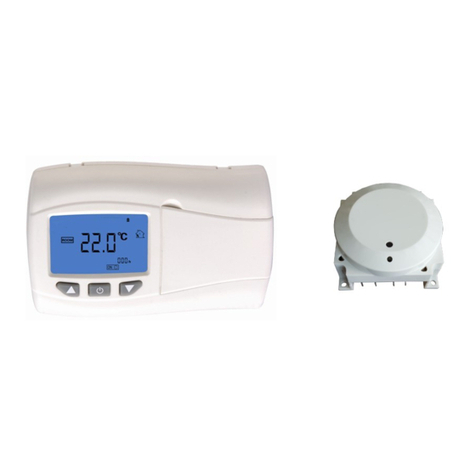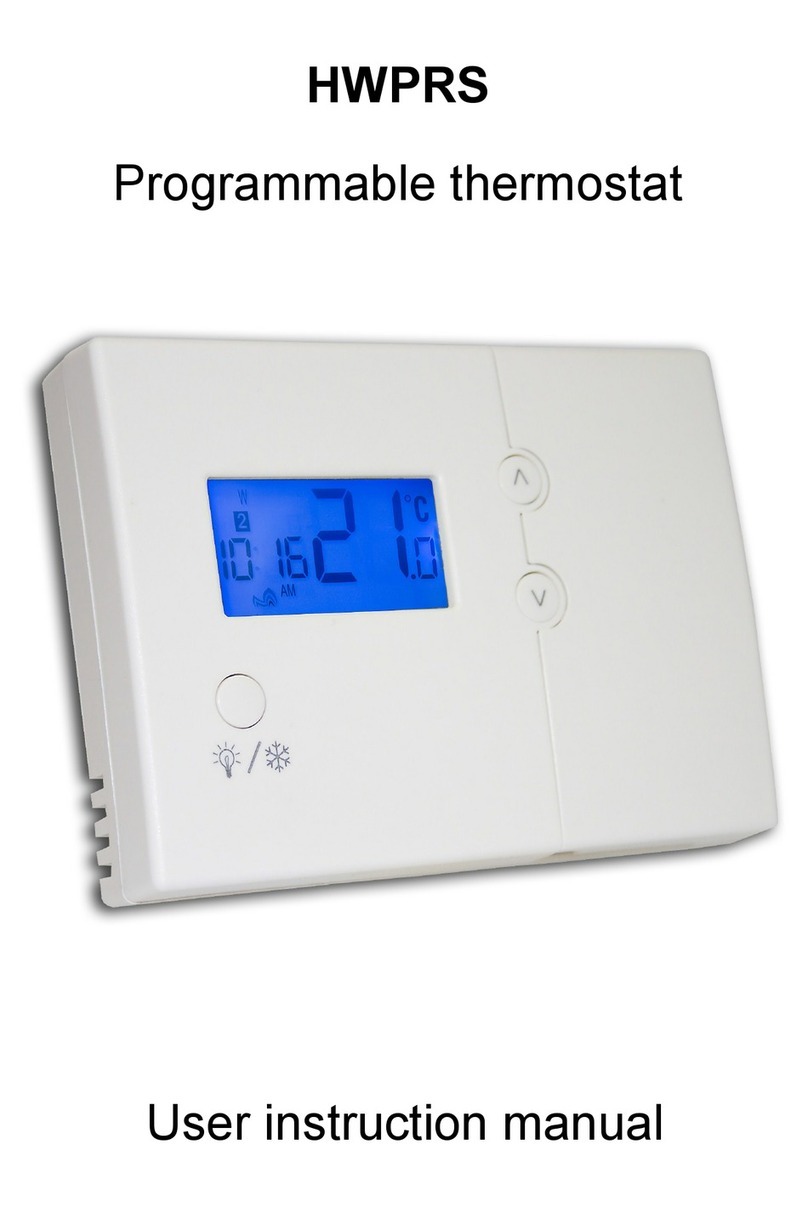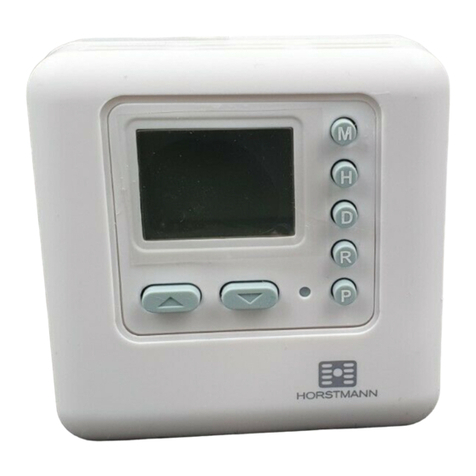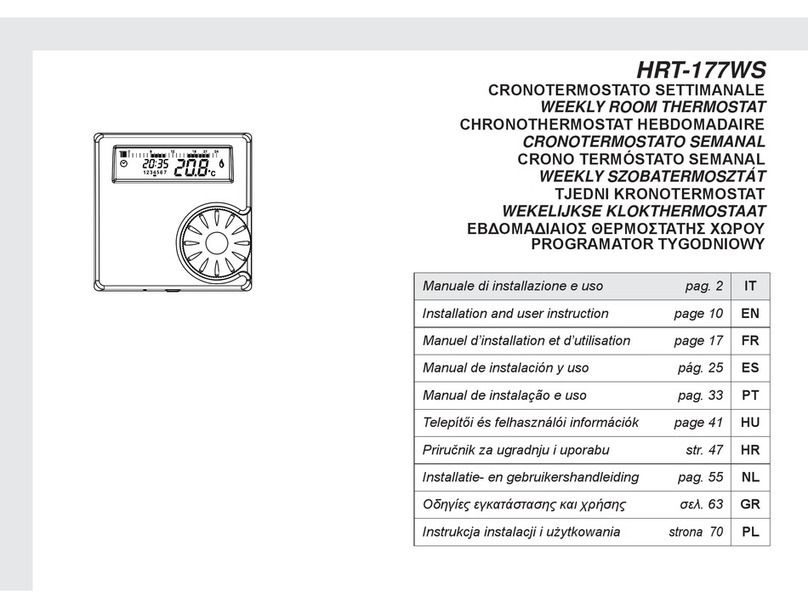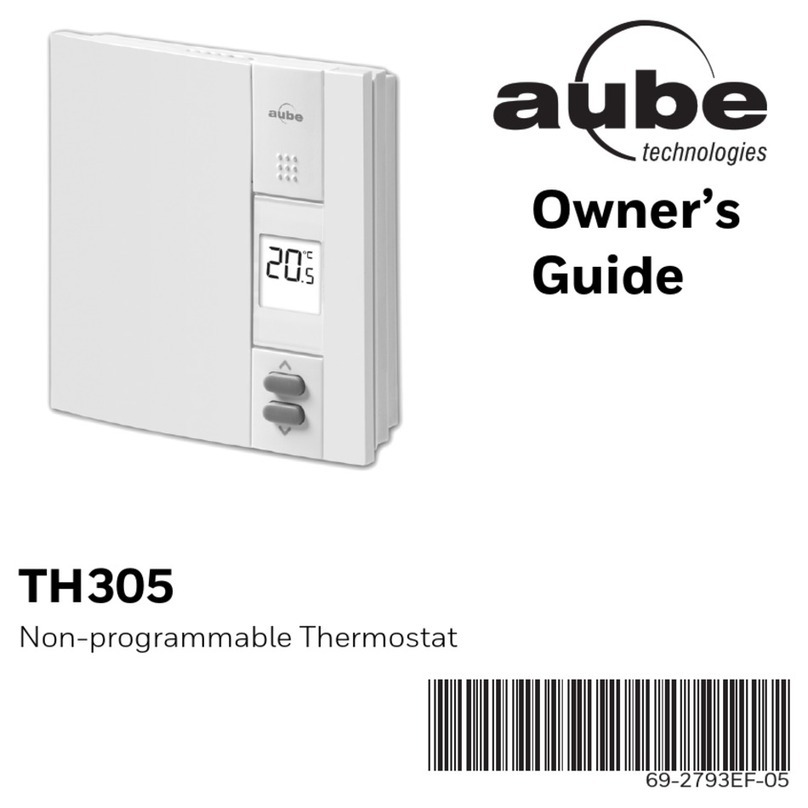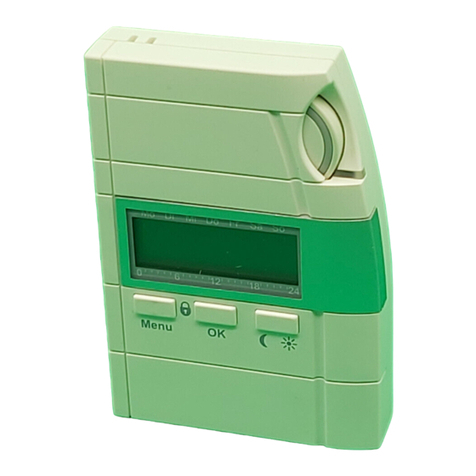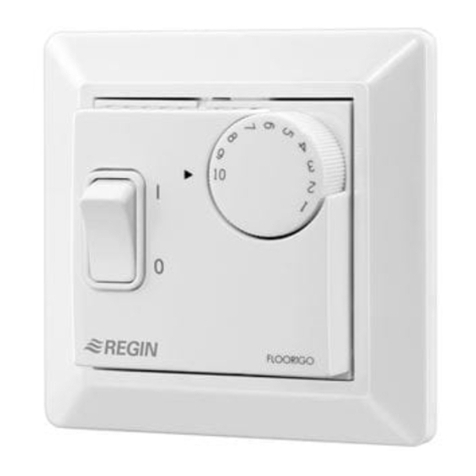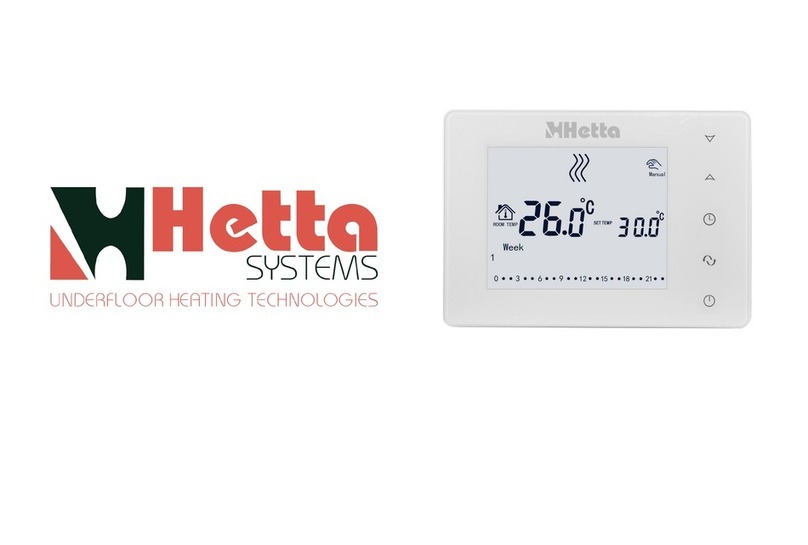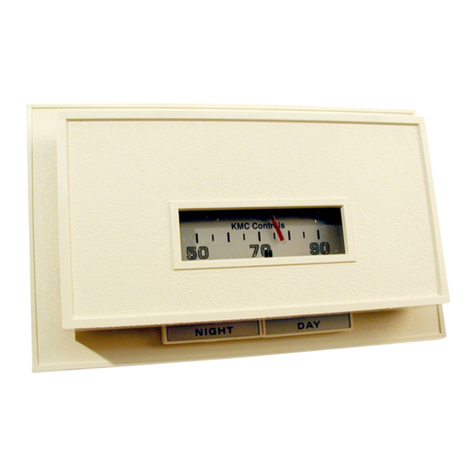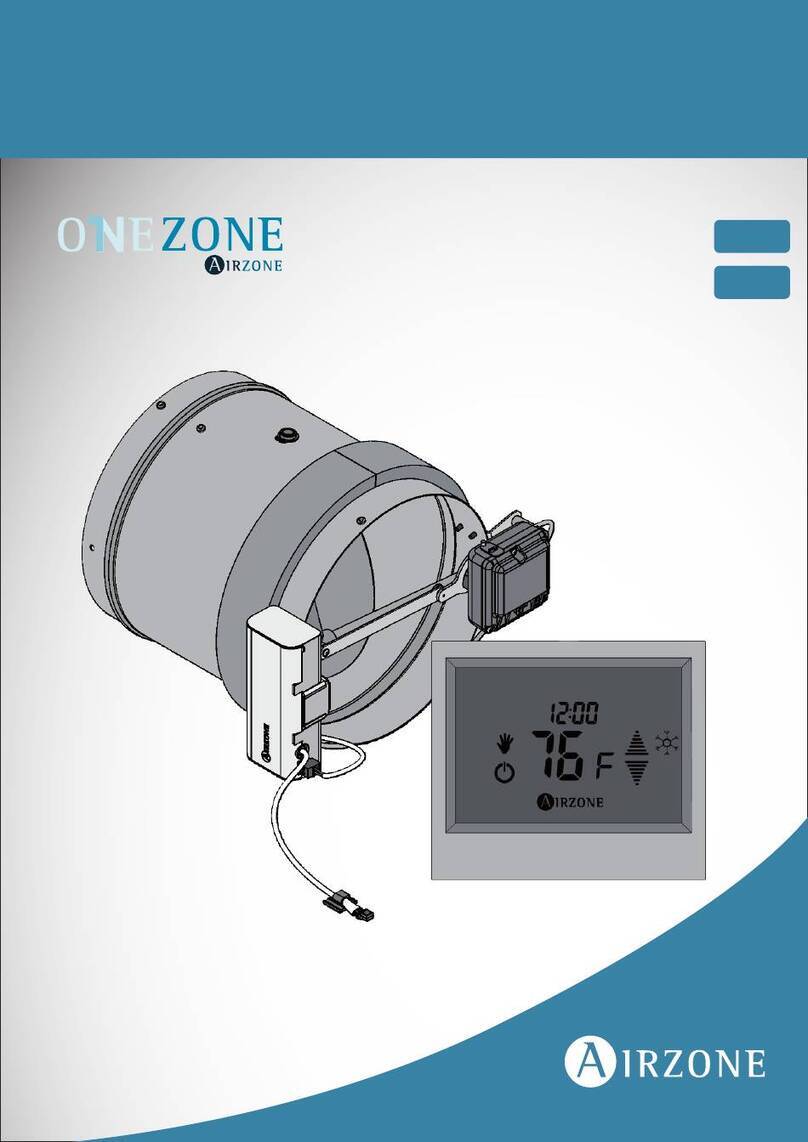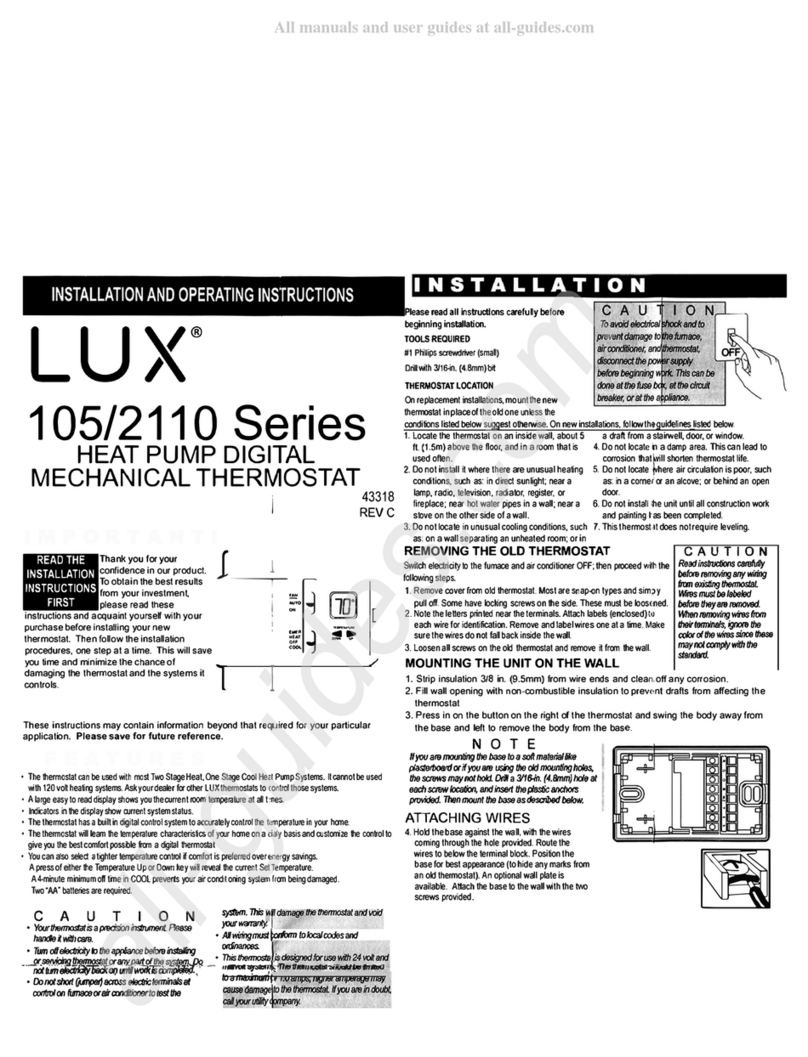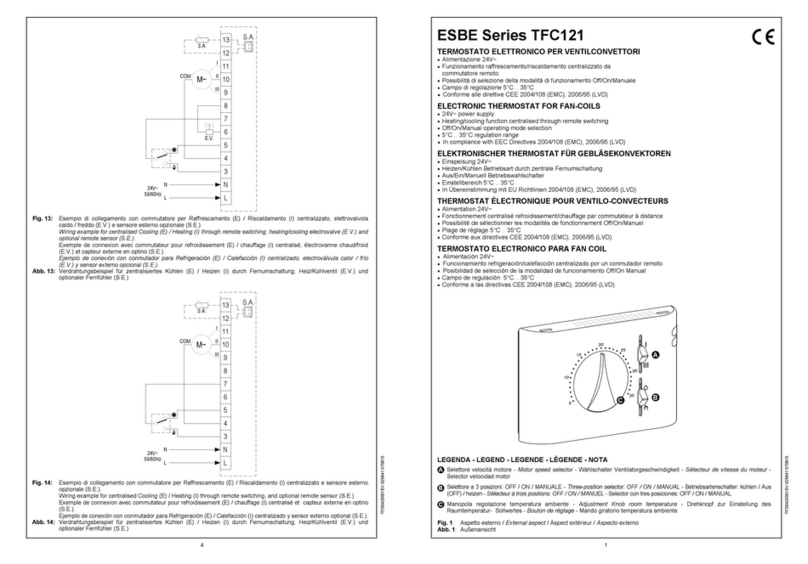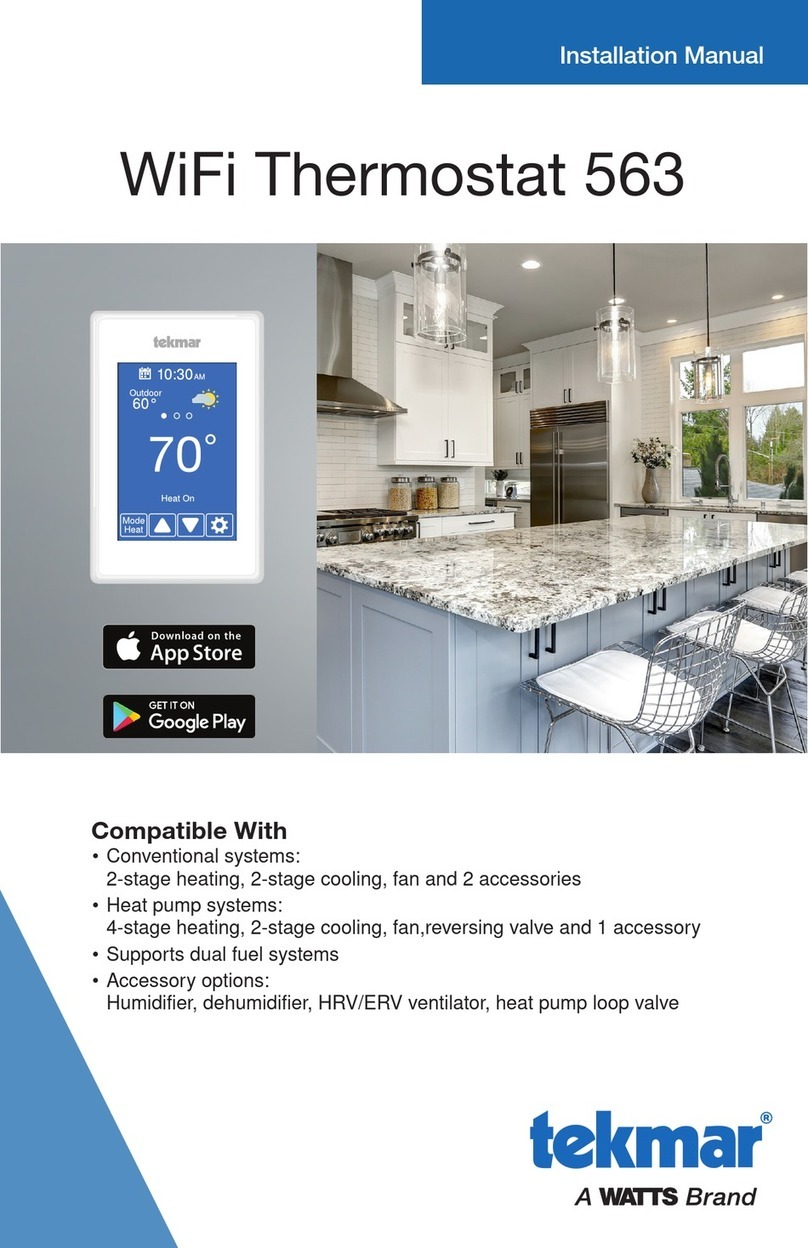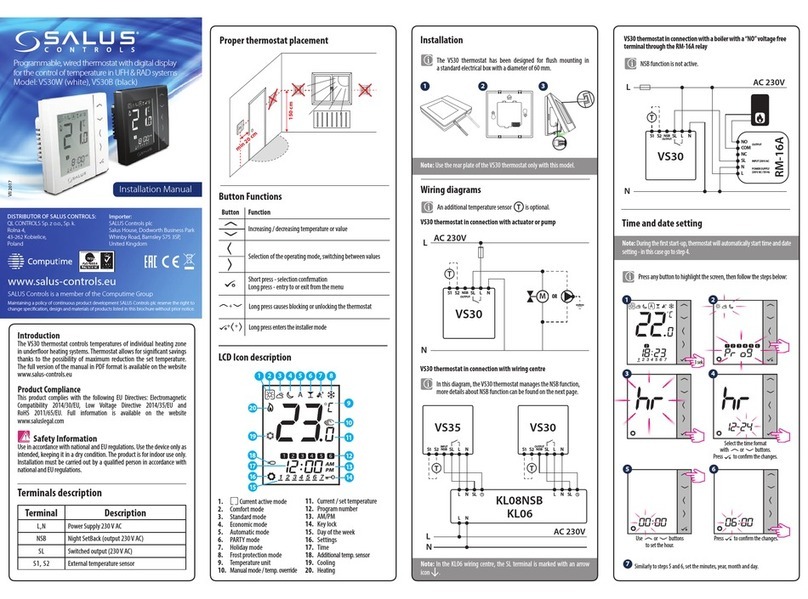TFC RFNP User manual

INTRODUCTION
INTRODUCTION
INTRODUCTION
This thermostat can replace any standard room thermostat, and is designed for use with gas or oil heating systems.
If you wish to control electric heating note that the current rating of the receiver is 3A resistive.
The transmitter is battery-powered and designed for wall mounting using the backplate supplied. A stand is supplied with
the set, if you wish to place the transmitter on a table-top.
The receiver requires a mains supply and provides a volt-free contact to switch any load up to 3A @ 230V 50Hz.
The transmitter can be installed—or should be located—wherever you would normally fit a room thermostat.
The receiver should be wall-mounted close to the boiler.
The transmitter and receiver communicate with 433 MHz radio frequency signals.
RADIO FREQUENCY COMMUNICATION
1. The factory default code for RF communication is 000. This should be changed if more than one control set is being
installed in any premises, or if unwanted operation occurs due to interference from any other radio frequency device.
See ‘FUNCTION SETTINGS: RF address code setting’ on page 2.
2. Ensure that different addresses are assigned to each thermostat set within the same installation. Note that there should
be a gap of at least one metre between receiver units to avoid RF interference.
3. During normal operation the transmitter sends signals at 10 minute intervals to ensure the receiver is in the correct
state. If for any reason a signal is ‘missed’ there will be a 10 minute delay until the next signal is sent. Alternatively you
can increase or decrease the temperature by pressing the up or down arrow keys, and this will prompt the transmitter to
send a new signal immediately.
FUNCTION AND WIRING OF THE RECEIVER
FUNCTION AND WIRING OF THE RECEIVER
FUNCTION AND WIRING OF THE RECEIVER
1.All wiring should be carried out by a skilled person. Disconnect power before wiring. The mains supply to the receiver
should be fused at 3 Amps.
2.Install the receiver adjacent to the heat source. The area should be free from any damp, or sources of electrical / mag-
netic interference (e.g. hi-fi speakers). The receiver should not be screened by any metal object(s).
3.If required, change the RF address code—see ‘FUNCTION SETTING: RF address code setting’ on the next page.
4.The receiver’s red LED illuminates to confirm a mains supply is present. The green LED illuminates when the output is
on, following a demand signal being received from the transmitter.
WIRING INFORMATION:
WIRING INFORMATION:
WIRING INFORMATION:
Using the crimp connectors and insulating boots provided, connect wiring to the receiver as noted below. For conven-
tional heating installations, connections will be required to terminals 1— 4 only. Terminal 5 can be ignored.
1
1
1
RFNP
Radio-frequency thermostat
User Instructions
Transmitter
Receiver
Push button function
Push button function
Push button function
Key Function
Increase setpoint temperature
Decrease setpoint temperature
Single press:
Turn on backlight for 5 seconds.
Press and hold:
Activate / deactivate Frost Protection
SET Key for confirming function setting
SELECT Key for function selection
RESET System reset
1 N Neutral
2 L Live
3 COM Switch input—common
4 NO Switch output (On) Normally open
5 NC Switch output (Off) normally closed
Wiring:
Wiring:
Wiring:
FOR RF SET
FOR RF SET
FOR RF SET-
-
-UP PLEASE SEE ‘RF ADDRESS CODE SETTING’ ON PAGE 2
UP PLEASE SEE ‘RF ADDRESS CODE SETTING’ ON PAGE 2
UP PLEASE SEE ‘RF ADDRESS CODE SETTING’ ON PAGE 2

FUNCTION SETTING:
(buttons for function setting and system reset are under the transmitter cover )
You can adjust the way the transmitter works, by accessing the function menu:
Note that the device will ‘time-out’ to normal running mode if no key is pressed for 15 seconds.
You can also change the calibration of the control temperature, and of the displayed temperature value.
After pressing SET and SELECT together, for 3 seconds, (and to by-pass the RF address code setting) press the SELECT
button to show:
CALIBRATION
The default calibration (accuracy of thermostatic control), is 0.50C. Use the up or down arrow buttons to change this to 1.00C
if you wish. Confirm with the SELECT button.
After setting (or viewing the calibration of control temperature) press the SELECT button to show:
DISPLAYED TEMPERATURE ADJUSTMENT
Use the up or down arrow keys to adjustment the displayed temperature in the range + or — 4.00C. Confirm your choice with
the SELECT button.
The device will time-out to the normal display after 15 seconds, or press SET to quit the function setting menu.
2
2
2
ADDITIONAL FUNCTIONS:
ADDITIONAL FUNCTIONS:
ADDITIONAL FUNCTIONS:
Frost protection: Whilst in the normal running mode, press and hold the button for 3 seconds to activate Frost Pro-
tection. The frost protection indicator in the top left of the display will flash. While frost protection is activated, the tempera-
ture set-point is 50C. In frost protection mode it is not possible to override the 50C temperature setting. To turn frost protec-
tion off, press and hold the button for 3 seconds. The frost protection indicator will disappear from the display, and
normal running mode is restored.
LCD backlight: The blue backlight is activated when any button is pressed, and will automatically turn off after 5 seconds.
You can also activate the backlight without changing the temperature by pressing the button. The LCD backlight will
not operate when the battery is low.
Low battery warning: When the battery voltage drops below a critical level, the low-battery warning indicator will be dis-
played. You should renew the batteries as soon as possible. If low batteries are left in the device, it will eventually be
unable to switch the heating on or off.
Sleep mode: Press and hold the up and down arrow buttons simultaneously for 3 seconds to activate sleep mode. OFF is
shown in the display. The device stops working as a thermostat while OFF is shown. The output will be turned off immedi-
ately. Press the up or down-arrow key to de-activate sleep mode, and restore normal control mode.
Specification:
Transmitter:
Battery powered 2 x AA (LR6) alkaline
LCD display
Blue backlight
Operating Control range: 10—350C in 0.50C steps.
Temperature control differential: 0.50C
Frost protection temperature: 5.00C
RF transmissions at 433 MHz
Receiver:
Mains powered 230V AC 50 / 60Hz
Relay output: Volt-free 3A (resistive)
Connection: 5 x DIN 6.3mm tab terminals
(crimp receptacles provided)
Operating temperature range: 0 — 500C
Operating humidity range: 0—90%
(non-condensing)
TEST THE RF COMMUNICATION
TEST THE RF COMMUNICATION
TEST THE RF COMMUNICATION
It is important to site the transmitter and receiver in suitable locations, such that the RF signal cannot be interrupted. The
range within buildings is 20—25 metres, but this can be affected by e.g. thick stone walls, foil backed plasterboard, metal
objects such as kitchen appliances etc.
Test the set in the following way:
1.The default temperature display shows the current room temperature. Press the up button until the set temperature is 2
degrees higher than the current room temperature.
2.Wait for a few seconds. The animated flame symbol should be seen in the top left-hand corner of the display.
3.Check the receiver. The green LED should be visible, and (if connected) the heating system should be running.
4.Press the down button on the transmitter to reduce the temperature below the current room temperature. Wait for a few
seconds. The animated flame symbol should disappear, and the green LED at the receiver should switch off.
5.If responses do not occur as expected during steps 1—4 above, press the reset button on the transmitter and repeat steps
1 – 4. If necessary, consider re-locating the transmitter to avoid RF obstacles.
RF ADDRESS CODE SETTING.
NOTE: YOU MUST CONFIRM THIS SETTING FOR THE CONTROL SET TO WORK.
With mains power connected to the receiver, press the button on the side of the receiver module. The receiver’s red and
green LED’s will start flashing.
Press and hold at the same time the transmitter SET and SELECT buttons for 3 seconds
The factory pre-set radio code of 000 will flash. Whilst this is showing you can adjust the code with the up (and down) arrow.
After choosing a new value, press to send the RF address to the receiver. The receiver LED’s will immediately
stop flashing, confirming that the transmitter code has been transferred to the receiver. The new code will be retained by the
receiver if power is disconnected. The address code can be changed by following this procedure at any time.
Table of contents
Other TFC Thermostat manuals
